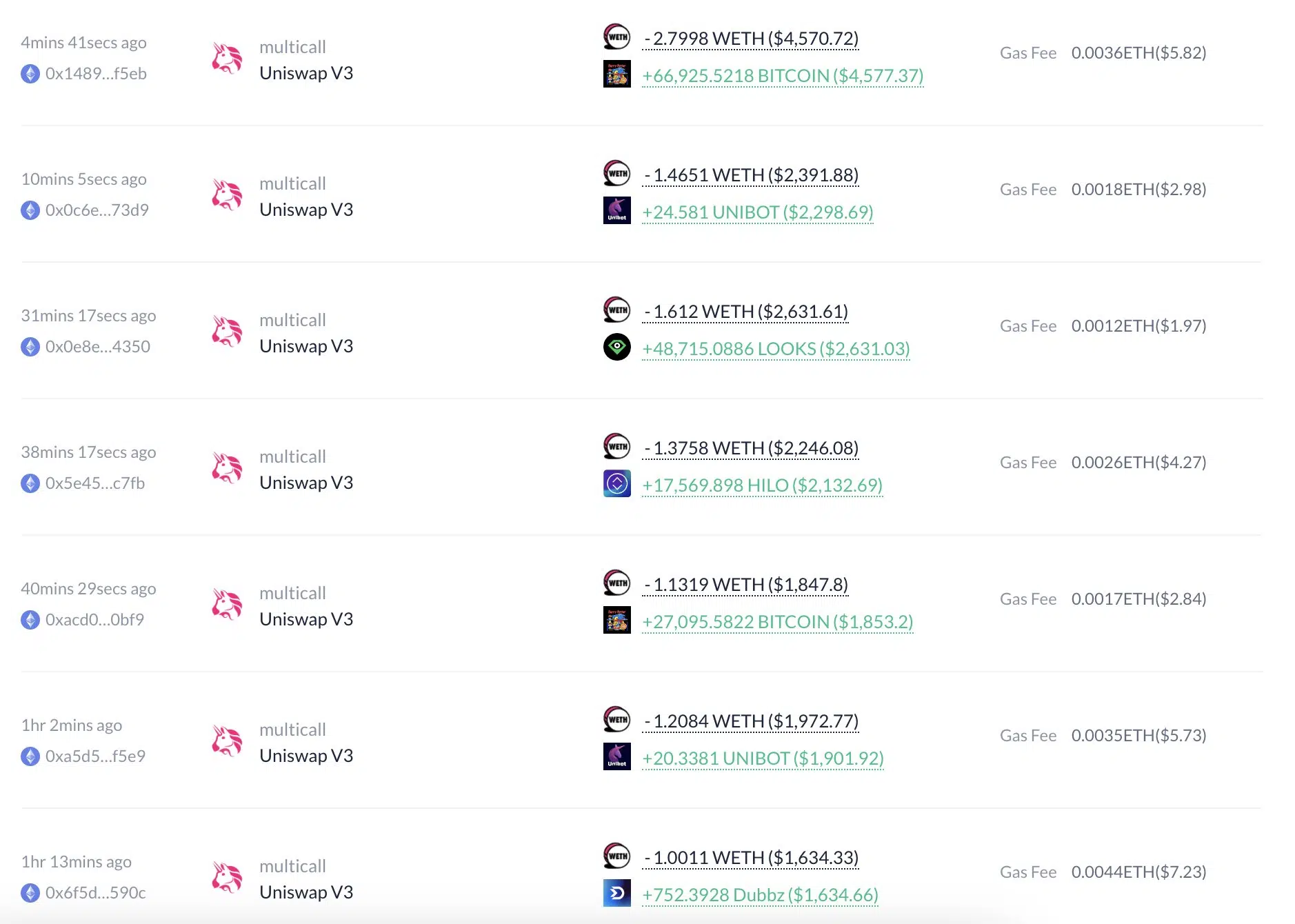The anticipation of the Blur airdrop has greatly increased its profile and made it a true rival to the long-time NFT market giant OpenSea. Through three gamification phases, the airdrop rewarded trades, listings, and bids. However, airdrops alone are not enough to make OpenSea a competitor. The noise and momentum from the airdrop is temporary and will only go so far. This can be seen in the stories of LooksRare and X2Y2, two tokens that launched LOOKS and X2Y2 token incentives early last year. Although their tokens had a lot of excitement at their initial launches, their prices have since dropped considerably and they have failed to capture significant market share from OpenSea.
In order to truly compete with OpenSea, the NFT marketplace Blur needs to continue innovating and building on its UX pillars and the launch of $BLUR. Blur has an attractive UX, which makes it a legitimate challenger to OpenSea in a real sense, beyond token economics. For example, Blur aggregates NFT listings from all major NFT marketplaces, including Seaport Protocol from OpenSea, so that the NFT marketplace is no longer subject to OpenSea’s marketplace blocklist. Furthermore, the listings refresh quickly, setting itself apart from the competition with real-time listings and instant NFT metadata display. Blur is also 10 times faster and nearly 20% more gas efficient than Gem, OpenSea’s NFT aggregator for sophisticated traders.
For Blur to win, it needs to have a protection moat. Currently, Blur’s speed advantage is real, its Gas efficiency is very high, and its Bid system is very flexible. As long as these are exclusive to Blur, those moats will only be moats. But if other competitors catch up on these fronts, those moats for the NFT marketplace will evaporate. In order to secure its moat, Blur needs to be faster, more efficient, and more agile. Additionally, 65% of Blur’s early users came from OpenSea and Gem, so if Blur can secure its moat, those users may switch forever.
The NFT marketplace also needs to keep rewarding. Blur’s gamified airdrop was an influential strategy that until now has helped the market keep pace with OpenSea in terms of NFT volume levels. Since the airdrop, they launched the “Second Season” $BLUR rewards, which will double all Bid and Listing Points on the market for the next month. A seasonal approach makes a lot of sense here.
For the NFT marketplace to continue moving forward, it must continue to evolve and innovate. A stagnation, for whatever reason, against champions OpenSea would certainly cost Blur a window of opportunity. For example, maybe the NFT marketplace could end up trying to beat OpenSea by bringing an optimized professional trading user experience to all the top L2 chains by centralizing it. Ultimately, it’s up to the Blur team to prioritize what they think is best, and execute and innovate around those plans in a deft manner.
There is no doubt that Blur is at a disadvantage in this game. OpenSea’s capabilities, resources, and active users are enormous. The NFT marketplace team won’t be able to beat OpenSea if they let the elements against them get to their heads. Sometimes the underdog wins, sometimes it’s the indomitable fighting spirit – the desire to “we’ll win” that, over time, makes the difference to the lying incumbent.
Half of any fight is what the other side does. In other words, the NFT marketplace can keep its $BLUR rewards liquid and continue to roll out one cool feature after another, but it’s hard to guarantee it won’t be beaten by OpenSea. Many believe it is a foregone conclusion that OpenSea will never launch its own token. But imagine if they did airdrop $SEA to users? This would be a landmark move that could further cement OpenSea’s dominance for years to come.
For the Blur team, it may be more than just getting everything right. It could also be like chess, to have the ability to execute their plans, while also hoping that OpenSea makes a bad judgment call! Blur needs to continue meaningfully advancing and building on its UX pillars and the launch of $BLUR. That’s easier said than done, right, so what should this rising star do? In order to become the next NFT market champion, the NFT marketplace needs to have the following five things.
First, it needs a protection moat. Blur needs to be faster, more efficient, and more agile. Second, it needs to keep rewarding. Blur should continue to roll out one cool feature after another. Third, it needs to have an advance plan. The NFT marketplace needs to continue to evolve and innovate. Fourth, it needs to stay motivated. The NFT marketplace team won’t be able to beat OpenSea if they let the elements against them get to their heads. Finally, it needs to pray that OpenSea does not launch its own token. If OpenSea does launch its own token, it could further cement OpenSea’s dominance for years to come.
Ultimately, if Blur is going to truly win the war on the NFT market, it will need to continue innovating and building on its UX pillars and the launch of $BLUR. It needs to have a protection moat, keep rewarding, have an advance plan, stay motivated, and pray that OpenSea does not launch its own token. If Blur can do all of these things, it may have a chance of becoming the next NFT market champion and overtaking OpenSea’s already dominant position.


